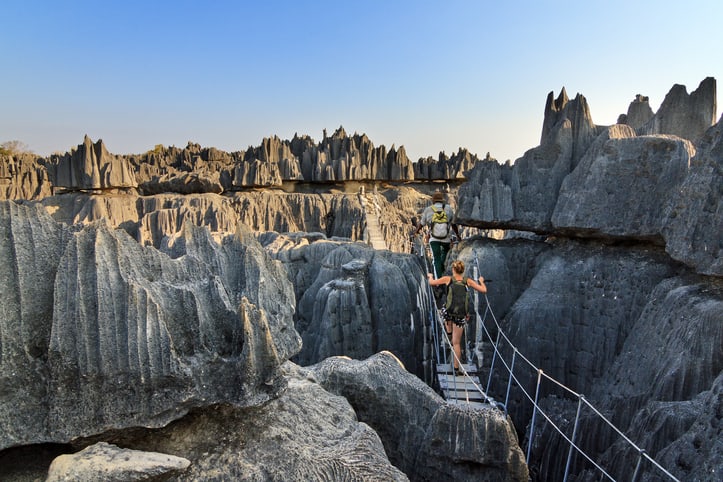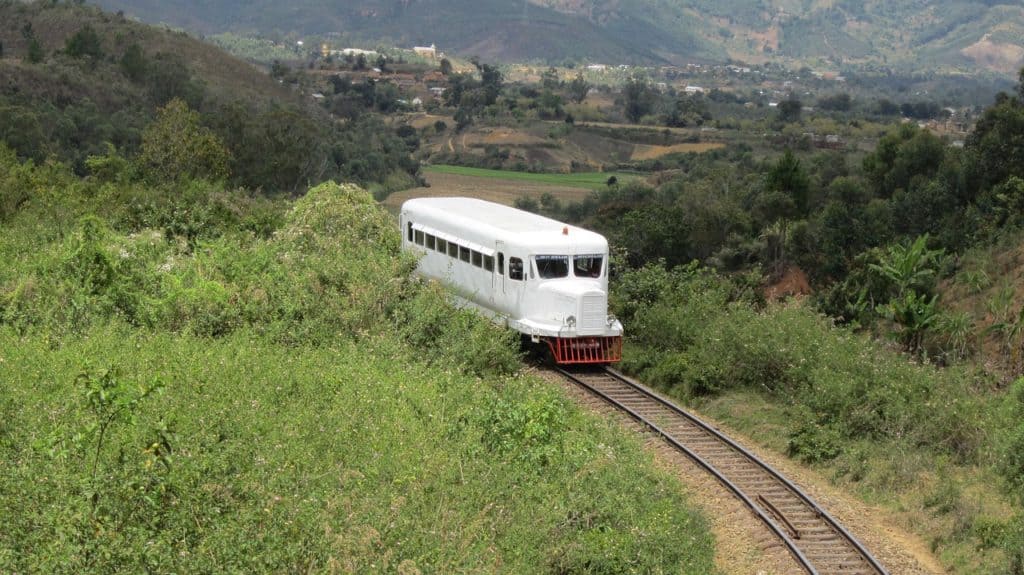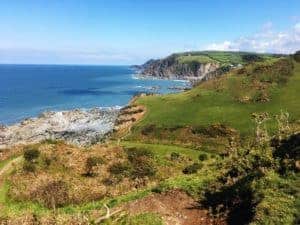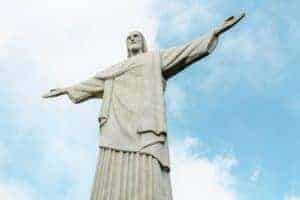
Madagascar… just the name alone imparts an alluring (vanilla scented) air of mysticism and an exotic faraway feeling. Anyone who has ever poured over a world map will have cast an eye over this rainbow land situated in the middle of the Indian ocean, quite simply because of its whopping great size.
As the fourth largest island on earth (after Greenland, New Guinea and Borneo) Madagascar is hard to miss, (except that it was missed by human settlers for thousands of years, hence its outstanding/eccentric natural beauty). It is roughly the same size as France with half the population (27 million) and situated around 250 miles off the east coast of Mozambique.
Malagasy
Despite its close proximity to the African continent, a surprising fact about Madagascar is that the first settlers roughly 2500 years ago were actually of south east Asian origin. This means that anyone with a finely tuned ear will note that the local lingo known as Malagasy, has an Indonesian lilt to it with the majority of island food and culture stemming from South East Asia.
Mora Mora
There is only one pace in Madagascar and that is slooow. Mora Mora is the Malagasy version of the Swahili, ‘hakuna matata’, and means ‘take it easy, take your time, what’s the rush?’ This is most likely a mindset borne from the fact that due to its pretty non-existent infrastructure, nothing in Madagascar happens quickly. Nearly all roads (not so much roads, more potholed tracks) to anywhere involve transiting through the capital city of Antananarivo or ‘Tana’ as it is locally known, positioned in the centre of the island. Allow at least one day travel time plus night stay to get from A (Tana) to B plus another day (and night) to get back to A and then one more day (and night) to travel to C.
Get the idea?
In deciding whether Madagascar is the place for you, you need to ask yourself, what do I enjoy best in my travels, the journey or the destination? …because, unless you intend to stay put in your airport hotel, holidaying in Madagascar is a (bumpy, often overcrowded, not always to be relied upon) journey.
Dream Trip?
Actually, yes so long as you don’t pack too much in, have a good level of fitness and remember to bring your hiking boots and waterproofs.
Madagascar lays on a mean feast for the senses; tropical jungle, desert plains, bursting at the seams with ancient flora and fauna, canyons, gorges, over 70 indigenous species of lemur, half of the world’s chameleon population, rainforests, pristine beaches and white sandy coves. It is a bird watchers paradise, a foodies heaven and, due to being way off the beaten track, a treasure trove of white knuckle delights for those endowed with an adventurous spirit.
Tana
International entry into Madagascar is by way of Ivato Airport, 10 miles north west of Tana. Tana is a pretty chaotic, colonial city sprawling over hills and plains. It is worth spending a day or two exploring, if nothing else, to slow down your pace and pick up the island vibe in preparation for your long travels ahead. The restaurant scene along the Avenue de l’Indépendance is buzzing and you won’t struggle to find a top notch on-a-par-but-way-more-affordable version of a Michelin-starred meal to wash down with the locally brewed Three Horse beer. For best views over the sprawling red clay city, stay in the Upper Town and awaken to sweet-scented jacaranda trees, bougainvillea and (less aromatic) grazing zebu (hump-backed cattle).

Tsingy National Park
No trip to Madagascar is complete without visiting what is known by the locals as Tsingy or ‘the place one cannot walk with bare feet.’ This UNESCO world heritage site is one of the most spectacular natural landscapes in the world dating back 200 million years and consisting of a 2.4 square mile labyrinth of razor sharp, limestone ‘spires’ shooting up from mangrove swamps to create a striking rock forest.
Your general level of fitness will help you decide whether to embark on the Grand or Petit Tsingy circuit. Both come complete with rope bridges, ladders, sheer drops, astounding views and lemur and birds unique to this barren terrain.
This is not an easy place to get to as it is remote and requires an element of the intrepid, but it is like nowhere else on earth, so worth it. Located on the west coast of the island, it takes around 13 hours to travel from Tana to Morondova, which is the closest town to Tsingy. To get into the national park, requires a ferry ride and a 4×4 (with driver). The cost of the trip is charged per vehicle and it is wise to make sure it includes hire for three days, the ferry rides and petrol. En-route you will pass the famous Allee de Baobabs; ancient, upside-down trees that can grow 30 metres tall and 10 metres wide. When viewed at sunrise/set this avenue offers one of the most iconic images of Madagascar.
Take note: Tsingy is only open during the dry season.
Piroguing on the Manambolo River
An alternative far more relaxing route to Tsingy is by way of pirogue (dugout canoe) down the muddy, Manambolo River past villages, fishermen, rare wildlife, banana trees, smiley children and paddy fields and includes camping out overnight.
Canyon Hikes in Isalo National Park
There are three highways in Madagascar, yes, just the three, and the longest is the RN7 heading 600 miles south west of Tana. Around five hours along the RN7 you arrive at Isalo National Park, made up of 500 square miles of sandstone desert canyons and deep gorges ideal for week-long trekking. Here is home to the famous ring-tailed lemur and, if you are lucky enough to spot one, the Verraux Sifaka, **especially lucky if the Verraux Sifaka is doing what it is best known for and that is, standing up on two feet.
One of the best features of hiking here is the diversity of landscape; one minute you can be trekking on desert sands and the next amidst leafy palms, gushing waterfalls, and crystal-clear ponds fit for bathing.

Ile Saint Marie
North east of Tana, Ile Saint Marie (or Nosy Boraha as it is locally known) offers 50km of white sands with turquoise sea, minimal tourists and the opportunity to spot plenty of humpback whales (around 1000 pay a visit to the island each year). It is a day long trek of car, bus, boat to get to here from Tana, but loads to do when you arrive including mountain biking, diving, snorkelling, kite surfing, sea kayaking, small clear water bays to explore and chilling round town in the back of tuk-tuks.
Night Walk in Ranomafana Rainforest
‘Rano’ is Malagasy for water and ‘Mafana’ means hot and so that should give you some idea about what to expect in Ranomafana, so named after the park’s natural hot springs. Located in the south east of the island, around six hours south of Tana off the RN7, Ranomafana covers 160 square miles of tropical rain and cloud forest and is home to the golden bamboo lemur, along with nose horned chameleons, brown mice lemur and cat eyed snakes all of which are best spotted after dark.
A Great Train Ride
Trains and Madagascar do not generally go in the same sentence as railway tracks on the island are very few and far between, but there does just happen to be one line running a couple of hours south of Ranomafana, and that is the Fianarantsoa – Manakara train route. This 163km track taking up to 24 hours from A to B is smelly, and busy, and pushy and slow (expect hour long stops at train stations), and charming and ramshackle, snaking over bridges, disappearing into long tunnels and skimming around hairpin bends.
Love it for its authenticity or loathe it for its…. authenticity, if you’ve got the time (and you will need this in bucket loads) try it for complete Malagasy immersion.

Know Before You Go
Allow time and choose carefully. Madagascar is not a pitstop location. Two weeks minimum in order to get to see a fair bit of the island and have time to relax in between destinations.
Arm yourself with plenty of food for the long journeys (buy this in the large towns and cities prior to travel) also make sure you have lots to do in order to keep yourself occupied.
Plan well. Again, if time is of the essence, make sure you are clued up on all the various transport options and timings as sometimes these are few and far between and missing connections can add days to your journeying.
For the most comfortable/reliable/frequent/affordable/least crowded travel experience go with Cotisse Transport. Other option besides private car hire and domestic flight is the taxi brousse (shared taxis) which is great if you have time (a lot of time), don’t mind getting up close and personal with fellow travellers and have a soft spot for chickens.
Pick the time of year to travel carefully. Best time to travel is in the dry, hot season of May to October. During the rainy season from November to April parts of the island can get quite cool and the island is prone to cyclones.
Most importantly, go with the flow. Mora Mora. Madagascar moves at its own pace and there is nothing you can do (bar getting stressed and overheated) to speed it up.
- Compare
- Sale!
- Highlights of Madagascar
-
£1,699.00£1,444.00 - View Trip



